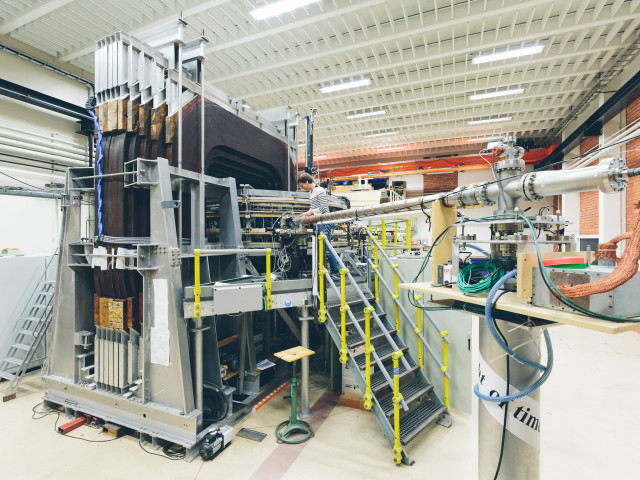X-ray diffraction, Rietveld method, band structure calculations, some applications in solid state physics.
IM2602 Solid State Physics, Extended Course 3.0 credits
This course has been discontinued.
Last planned examination: Autumn 2020
Decision to discontinue this course:
No information inserted
Information per course offering
Course offerings are missing for current or upcoming semesters.
Course syllabus as PDF
Please note: all information from the Course syllabus is available on this page in an accessible format.
Course syllabus IM2602 (Autumn 2009–)Content and learning outcomes
Course contents
Intended learning outcomes
The extended course gives a deeper knowledge within a few areas of solid state physics. Through a few selected examples, the students will become familiar with the principles behind modern methods within the field. The examples are chosen to include both experimental and theoretical aspects and also give connections to important technical areas of applications.
After the course the students should be able to:
- review the physics determining a complete X-ray diffractogram and be able to use the Rietveld method to carefully extract the lattice parameters of a polycrystalline material
- review some methods for band structure calculations and their backgound and also by themselves make a simple band structure calculation
- review some applications and their connection to basic physical phenomena within a few selected areas of solid state physics, like e.g. semiconductor technology, nanotechnology, superconductivity, magnetism, surface physics, optical properties, optical materials, metallography etc.
The choice of areas can vary between years and will to some extent be decided together with the students. Specific course objectives for these parts will be distributed at the lectures.
Literature and preparations
Specific prerequisites
IM2601 (participation).
Recommended prerequisites
Basic university physics within thermodynamics, optics, electrical engineering, quantum physics and statistical physics.
Equipment
Literature
Charles Kittel, Introduction to solid state physics, 8th edition, John Wiley and Sons Inc. (2005), ISBN: 978-0-471-41526-8.
Material från kursansvarig.
Examination and completion
If the course is discontinued, students may request to be examined during the following two academic years.
Grading scale
Examination
- ANN1 - Report, 1.5 credits, grading scale: A, B, C, D, E, FX, F
- LAB1 - Laboratory Work, 1.5 credits, grading scale: P, F
Based on recommendation from KTH’s coordinator for disabilities, the examiner will decide how to adapt an examination for students with documented disability.
The examiner may apply another examination format when re-examining individual students.
Home assignments (ANN1), 1,5 credits and laborative work (LAB1) 1,5 credits.
Opportunity to complete the requirements via supplementary examination
Opportunity to raise an approved grade via renewed examination
Examiner
Ethical approach
- All members of a group are responsible for the group's work.
- In any assessment, every student shall honestly disclose any help received and sources used.
- In an oral assessment, every student shall be able to present and answer questions about the entire assignment and solution.
Further information
Course room in Canvas
Offered by
Main field of study
Education cycle
Add-on studies
Advanced courses in solid state physics.
Supplementary information
Only for students who has chosen the course IM2601 Solid state physics.
The course is replaced by SK2751 as from autumn term 2017.